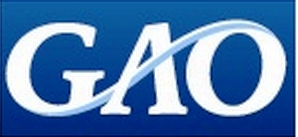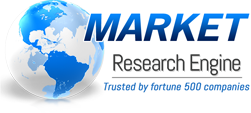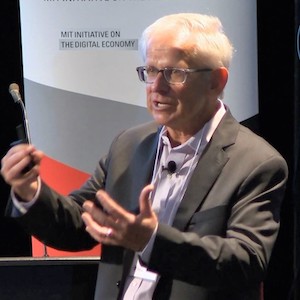 In a great post, "Doctor as Designer" Joyce Lee laments the "sad state of product and design in healthcare," and asks "when will device and drug companies create user-centered innovations that actually improve the lives of patients instead of their bottom line?" I heartily agree with Dr. Lee's point, and think the question can be extended to the rest of the health care system. Dr. Lee uses two examples to compare health care to consumer goods. Heinz took a product design -- the glass ketchup bottle -- that had been around for over a hundred years, and greatly improved the user experience by changing to a squeezable "upside down" bottle. This not only kept the ketchup from concentrating at the bottom but also avoided the need to hold the bottle at a special angle or to tap at a particular spot just to get the ketchup out...
In a great post, "Doctor as Designer" Joyce Lee laments the "sad state of product and design in healthcare," and asks "when will device and drug companies create user-centered innovations that actually improve the lives of patients instead of their bottom line?" I heartily agree with Dr. Lee's point, and think the question can be extended to the rest of the health care system. Dr. Lee uses two examples to compare health care to consumer goods. Heinz took a product design -- the glass ketchup bottle -- that had been around for over a hundred years, and greatly improved the user experience by changing to a squeezable "upside down" bottle. This not only kept the ketchup from concentrating at the bottom but also avoided the need to hold the bottle at a special angle or to tap at a particular spot just to get the ketchup out...
chronic disease management
See the following -
16% of Healthcare Stakeholders Plan to Use Blockchain by 2017
Blockchain may have entered the healthcare lexicon in 2016 as a somewhat fuzzy concept, but the innovative method of securing and validating data transactions is poised to take the industry by storm over the next twelve months, according to an international survey conducted by IBM. Sixteen percent of the 200 healthcare executives participating in the poll have concrete plans to implement a commercial blockchain solution within their organizations in 2017, while an additional 56 percent are likely to follow by the end of the decade...
- Login to post comments
An Open Source Solution For The Quantified Self Trifecta
The last five years have been redefining for the quantified self movement. Gone are the days that self monitoring was limited to pedometers and food diaries. [...] Over the years, this consumer-driven demand has led to a groundswell of technological advancements. The advancements in quantified self technology seem to be converging on a trifecta of quantified health: activity, vitals, and calories. Read More »
- Login to post comments
Apervita Nets $18 Million in Series A Funding to Democratize Health Analytics
 Apervita, Inc., formerly known as Pervasive Health, Inc., the first health analytics marketplace, today announced it has completed an $18 million Series A round of funding. The capital will support its goal of empowering enterprises across the globe to transform health knowledge and data into computable insight, addressing healthcare's most pressing challenges. With this funding, Apervita will accelerate the development of its platform, giving health professionals access to thousands of analytics at a fraction of the time and cost of today’s proprietary analytics solutions...
Apervita, Inc., formerly known as Pervasive Health, Inc., the first health analytics marketplace, today announced it has completed an $18 million Series A round of funding. The capital will support its goal of empowering enterprises across the globe to transform health knowledge and data into computable insight, addressing healthcare's most pressing challenges. With this funding, Apervita will accelerate the development of its platform, giving health professionals access to thousands of analytics at a fraction of the time and cost of today’s proprietary analytics solutions...
- Login to post comments
Asking Better Questions and Improving Patient Engagement
 I've been thinking about questions. A few things I read helped spur this. The first was a blog post entitled "Asking the Wrong Questions" by Benedict Evans, of VC firm Andreessen Horowitz, Mr. Evans looked at a couple of long range technology forecasts (from as long ago as 1964 and as recently as 1990), and pointed out how they both managed to miss several key developments. He attributed this to "this tendency to ask the wrong questions, or questions based on the wrong framework." And we're still at it. Mr. Evans, whose background is mobile technologies, said that people are now doing a lot of speculating about what comes "after mobile," such as AR and VR...
I've been thinking about questions. A few things I read helped spur this. The first was a blog post entitled "Asking the Wrong Questions" by Benedict Evans, of VC firm Andreessen Horowitz, Mr. Evans looked at a couple of long range technology forecasts (from as long ago as 1964 and as recently as 1990), and pointed out how they both managed to miss several key developments. He attributed this to "this tendency to ask the wrong questions, or questions based on the wrong framework." And we're still at it. Mr. Evans, whose background is mobile technologies, said that people are now doing a lot of speculating about what comes "after mobile," such as AR and VR...
- Login to post comments
Benefits of Patient-Generated Health Data, Patient Engagement
Between improving chronic disease management, boosting the Precision Medicine Initiative, and driving patient satisfaction, patient-generated health data has many healthcare benefits. Through the current health technology boom amongst patients and the near-ubiquitous adoption of EHRs amongst providers, patient-generated health data has become an important aspect of patient engagement...
- Login to post comments
Doctors’ reminders help keep people more engaged in their health care
 A study led by Dr. John Mafi, a professor at the David Geffen School of Medicine at UCLA, has found that a simple note from a primary care doctor can be a critical way to keep patients involved in their own health care. The research, published today in the peer-reviewed Journal of the American Medical Informatics Association, examined a growing national program that provides patients with easy online access to their doctors’ notes about their appointments. The program, OpenNotes, began in 2010, when 105 primary care physicians invited nearly 14,000 of their patients to view their electronic notes about their clinic visits. The initiative was intended to better engage patients in their own care and improve communication between patients and their doctors.
A study led by Dr. John Mafi, a professor at the David Geffen School of Medicine at UCLA, has found that a simple note from a primary care doctor can be a critical way to keep patients involved in their own health care. The research, published today in the peer-reviewed Journal of the American Medical Informatics Association, examined a growing national program that provides patients with easy online access to their doctors’ notes about their appointments. The program, OpenNotes, began in 2010, when 105 primary care physicians invited nearly 14,000 of their patients to view their electronic notes about their clinic visits. The initiative was intended to better engage patients in their own care and improve communication between patients and their doctors.
- Login to post comments
EHRs, IoT, Revenue Cycle Bring Opportunities for Healthcare APIs
 Application programming interfaces (APIs) are quickly becoming a critical tool for healthcare organizations looking to build interoperable connections, and it is likely that this new standard for health data exchange will keep growing in importance during the next few years. A new report from Market Research Engine (MRE) predicts healthy growth for the nascent healthcare API ecosystem, forecasting a 4 percent compound annual growth rate (CAGR) that will produce a $234 million market by 2024....
Application programming interfaces (APIs) are quickly becoming a critical tool for healthcare organizations looking to build interoperable connections, and it is likely that this new standard for health data exchange will keep growing in importance during the next few years. A new report from Market Research Engine (MRE) predicts healthy growth for the nascent healthcare API ecosystem, forecasting a 4 percent compound annual growth rate (CAGR) that will produce a $234 million market by 2024....
- Login to post comments
GAO Makes Appointments to Health Information Technology Advisory Committee
 Gene L. Dodaro, Comptroller General of the United States and head of the U.S. Government Accountability Office (GAO), today announced 15 appointments to the new Health Information Technology (HIT) Advisory Committee. It is extremely valuable to have a range of perspectives and expertise in helping the government address challenges related to health information technology, “It is extremely valuable to have a range of perspectives and expertise in helping the government address challenges related to health information technology,” Dodaro said...
Gene L. Dodaro, Comptroller General of the United States and head of the U.S. Government Accountability Office (GAO), today announced 15 appointments to the new Health Information Technology (HIT) Advisory Committee. It is extremely valuable to have a range of perspectives and expertise in helping the government address challenges related to health information technology, “It is extremely valuable to have a range of perspectives and expertise in helping the government address challenges related to health information technology,” Dodaro said...
- Login to post comments
Here's Why Nokia Is Increasing Focus On The Healthcare Segment
Within a month of completing the acquisition of Withings, a digital health products company based in France, Nokia recently announced a collaboration with HUS/Helsinki University Hospital and the University of Helsinki Faculty of Medicine both to create innovative solutions for outpatient care, and to foster mutual research and development. The first project under this collaboration will launch this quarter, with Nokia Technologies and HUS working to develop remote patient monitoring solutions...
- Login to post comments
How to Cut Through the Noise of the Healthcare Internet of Things
Healthcare providers are busy people. Between high patient loads and the demands of EHR documentation, the reporting requirements, the internal meetings, and the minutes wasted waiting for test results or other communications from the care team, there is often precious little time to get a cup of coffee, let alone sit down to rethink their workflow procedures...
- Login to post comments
mHealth Solutions Market Worth 90.49 Billion USD by 2022
According to a new market research "mHealth Solutions Market by Connected Devices (Blood Pressure Monitor, Glucose Meter, Peak Flow Meter) Apps (Weight Loss, Woman Health, Personal Health Record, & Medication) Services (Diagnostic, Remote Monitoring, Consultation) - Global Forecasts to 2022", published by MarketsandMarkets™, the Global mHealth Solutions Market is expected to reach USD 90.49 Billion by 2022 from USD 21.17 Billion in 2017, at a CAGR of 33.7%...
- Login to post comments
Pardon Me, Your Interface Is Showing
- Login to post comments
Patient Engagement Solutions Market Worth US$ 34.5 Billion by 2023
 Market Research Engine has published a new report titled as ''Patient Engagement Solutions Market...The patient engagement solutions market is expected to exceed more than US 34.50 billion by 2023 Growing at a CAGR of 23% in the given forecast period of 2015 to 2023. Patient engagement solutions aid patients handle their health care information and permits for better interaction with medical panel or doctor. It also allows patients to view test results online and communicate with doctors through electronic message. Patient engagement solutions are very important part in mhealth technology. Many healthcare companies have patient engagement solution as target goal such as accountable care organizations and patient centered medical home.
Market Research Engine has published a new report titled as ''Patient Engagement Solutions Market...The patient engagement solutions market is expected to exceed more than US 34.50 billion by 2023 Growing at a CAGR of 23% in the given forecast period of 2015 to 2023. Patient engagement solutions aid patients handle their health care information and permits for better interaction with medical panel or doctor. It also allows patients to view test results online and communicate with doctors through electronic message. Patient engagement solutions are very important part in mhealth technology. Many healthcare companies have patient engagement solution as target goal such as accountable care organizations and patient centered medical home.
- Login to post comments
Providers 'Grappling' With Mobile Plans
Everybody uses mobile devices, but no one is still quite sure how to make the most of them. That, to varying degrees of more-or-lessness, is the upshot of the most recent HIMSS Analytics Mobile Technology Survey, which for the past three years has taken the pulse of an industry still coming to terms with the benefits and risks of mobile technology...
- Login to post comments
Today's Patient Portals CAN NOT Capture Network Value (Part 2)
 Today’s patient portals are a mess. The catchphrase “Your mom has 7 portals for 7 providers” sums up patients’ frustrations and the resulting tepid utilization of portals. Today’s portals CAN NOT capture network value. The first post in this series introduced the platform terminology of single-homing vs. multihoming. Patients strongly would prefer to have as few portals as possible — ideally one, i.e., a single “home”. However, patients are forced to subscribe to multiple homes since today’s portals are tethered to individual institutions or care providers. In this post, we’ll introduce the platform terminology of stand-alone vs. network value. Today’s patient portals can provide some stand-alone value, but they provide minimal network value.
Today’s patient portals are a mess. The catchphrase “Your mom has 7 portals for 7 providers” sums up patients’ frustrations and the resulting tepid utilization of portals. Today’s portals CAN NOT capture network value. The first post in this series introduced the platform terminology of single-homing vs. multihoming. Patients strongly would prefer to have as few portals as possible — ideally one, i.e., a single “home”. However, patients are forced to subscribe to multiple homes since today’s portals are tethered to individual institutions or care providers. In this post, we’ll introduce the platform terminology of stand-alone vs. network value. Today’s patient portals can provide some stand-alone value, but they provide minimal network value.
- Login to post comments